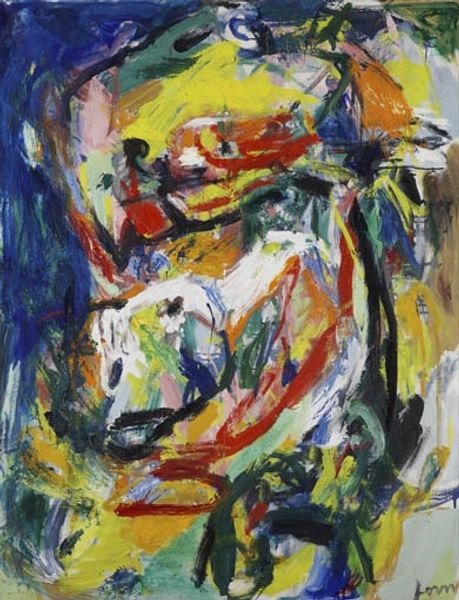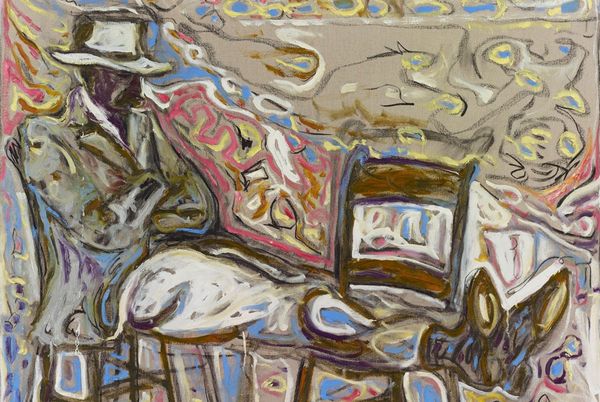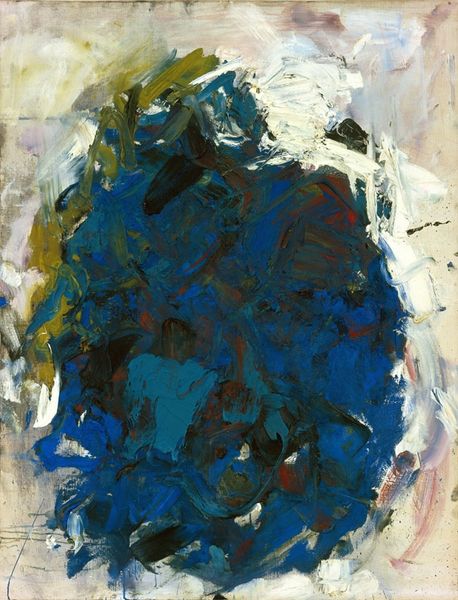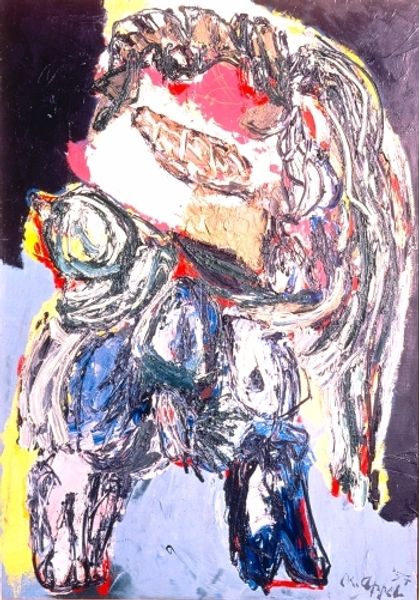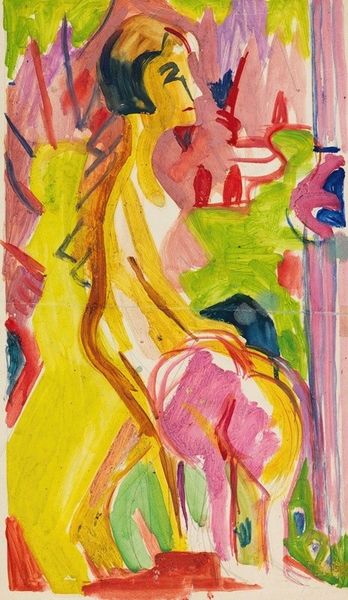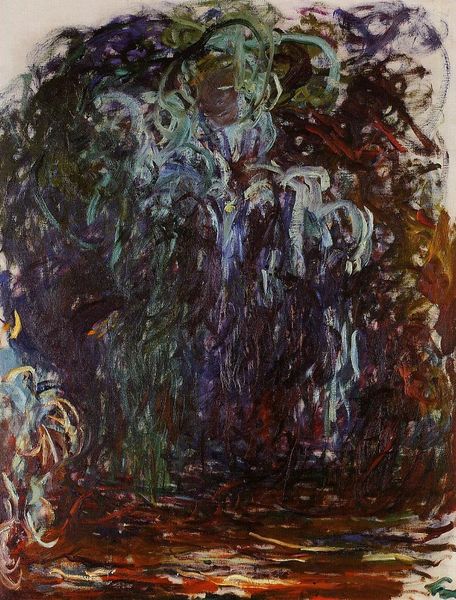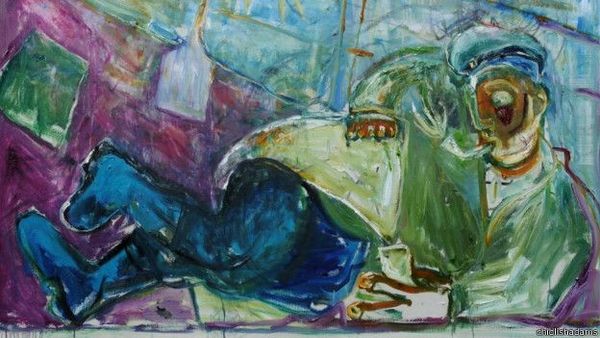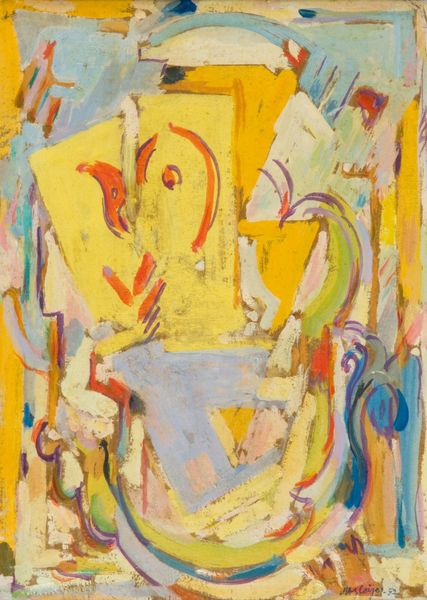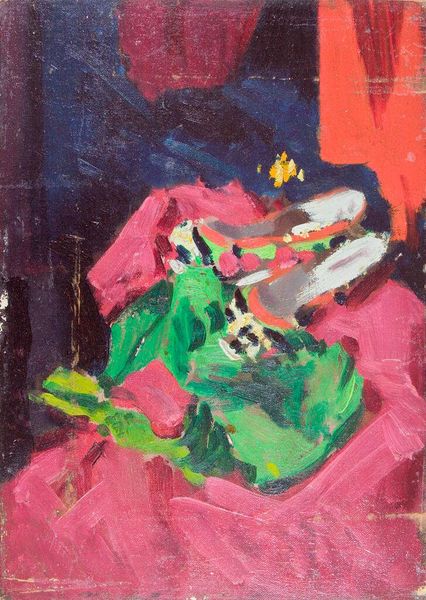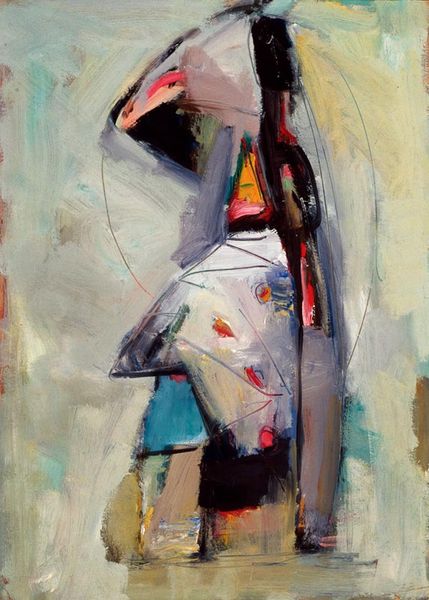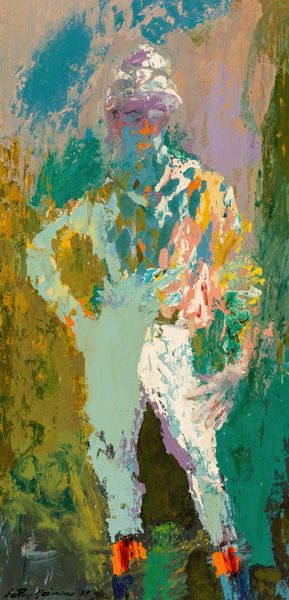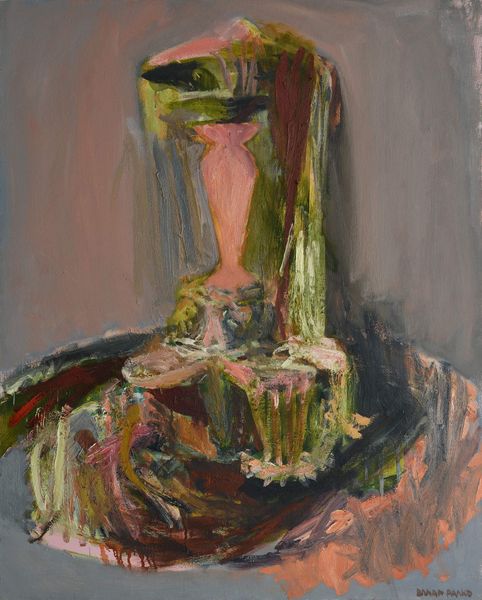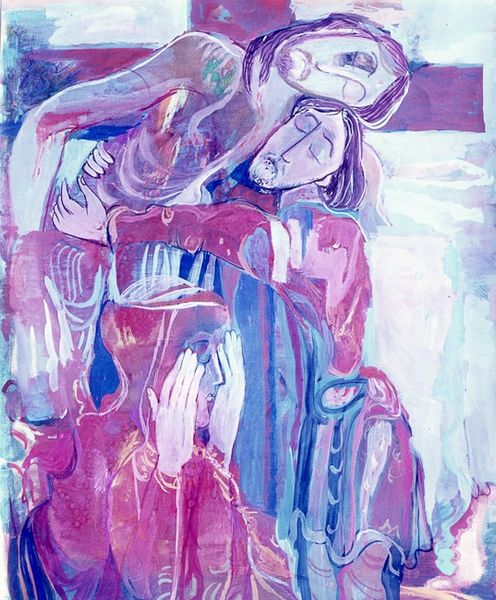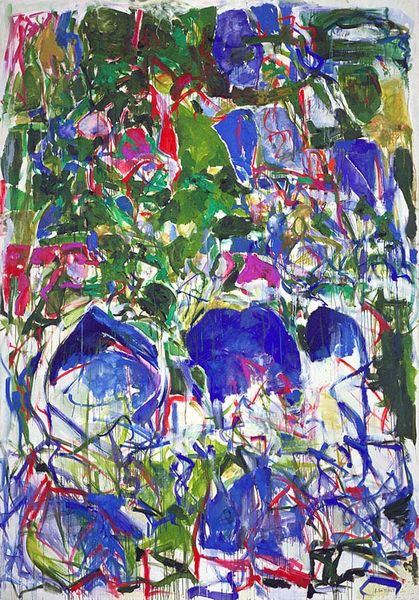
Copyright: Billy Childish,Fair Use
Curator: Before us, we have Billy Childish's 2008 painting, "Robert Walser Lying Dead in the Snow," rendered in acrylic on canvas. Editor: My initial impression is bleak, a visceral representation of vulnerability. The colors are muted, dominated by whites and blues, which only accentuates the feeling of coldness. The brushstrokes are rough, conveying a sense of urgency, perhaps mirroring the abruptness of death. Curator: That starkness definitely speaks to Walser's own alienation, often reflecting the anxieties of early 20th-century society as filtered through his outsider perspective. The naive style of the piece serves to further isolate the subject and remove it from high society pretenses. Editor: It's also intriguing how Childish’s handling of the paint mimics the texture of snow, isn't it? The layering of the acrylic gives the surface a certain grit, reminding us of the physical weight and density of snow, thus rendering the act of finding Walser’s body lying lifeless feel more present and palpable. Curator: Absolutely, there's a materiality to the depiction of the body itself—how it seems both present and dissolving simultaneously. We cannot forget the fact that Walser died alone, far away from any social infrastructure, at Christmas time, arguably the peak of Western capitalist structures of comfort and kinship. Editor: The black shape near the base of the painting is a nice reminder of such sociopolitical concepts. What would seem, at first glance, a spontaneous stroke turns out to be a fragment loaded with social critique about death, labor, and social isolation. Childish has an undeniable command of color as metaphor here. Curator: Childish definitely captures that complexity of human existence through these painterly techniques, blurring the line between romantic tragedy and social critique, making us contemplate Walser’s demise in the context of those broader systemic failures. Editor: Yes, and the execution is powerful, particularly considering how Childish’s gestural abstraction echoes Walser’s fragmented literary style. Curator: It invites viewers to reconsider established narratives surrounding both the artist and his untimely end, prompting reflections on class, solitude, and societal neglect. Editor: Exactly, art isn’t just about representation; it's a complex process engaging with sociopolitical consciousness. Childish drives that point home very well.
Comments
No comments
Be the first to comment and join the conversation on the ultimate creative platform.
